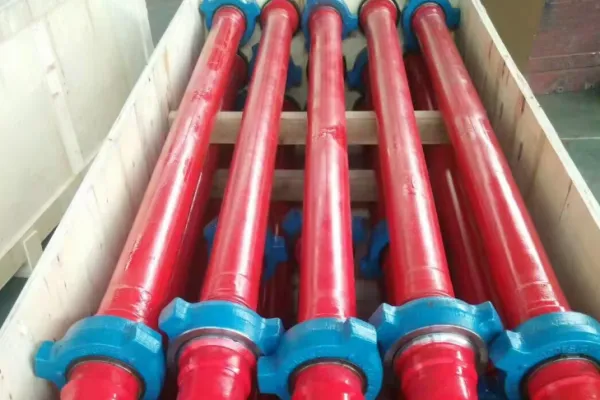What is a tubing Pup joint?
A tubing joint is a short length of casing or pipe used in oil and gas well operations. It is primarily used to adjust the length of the casing to achieve the required spacing for well completions. Essentially, tubing joints serve as connectors to bridge gaps or adjust the overall length of the pipe for precise placement in the wellbore.
While similar to standard tubing joints, tubing joints differ primarily in their shorter length. Tubing joints are typically around 30 feet (9 meters) long, while pipe joints can range from 1 foot to 20 feet.
Pipe Joint Features:
Size: Same as pipe joints (e.g., 2-7/8”, 3-1/2”, 4-1/2”).
Threads: Common thread types such as EUE (External Upset End), VAM TOP, JFE Bear, etc.
Grade: Various grades such as J-55, N-80, L-80, and P-110.
Weight: Consistent with pipe joint weights (e.g., 6.5 lb/ft, 8.7 lb/ft, 10.4 lb/ft).
Length: The distinguishing factor, typically shorter than standard pipe.
Alternative Names:
Pup joints are also known as:
Saver Sub
Spacer
Pup
What is a CrossoverJoint?
A crossover sub (commonly called an "X-Over") is a mechanical adapter used to connect threaded components with different characteristics. These components may differ in size, thread type, or both. Crossovers are essential in the assembly of drill strings or completion strings, ensuring compatibility between different components.
Crossover Applications:
They are found in the drill string, usually between the drill pipe and the drill collars.
They are used to connect casing, tubing, or drill pipe components with varying specifications.
They facilitate transitions between tools or pipe in the drill string.
Crossover Features:
Constructed as a single-piece tubular section.
Equipped with threaded ends designed for specific sizes or thread types.
Manufactured to meet the strength and durability requirements of the application.
Table: Key Differences Between a Pup Joint and Crossover Joint
|
Aspect
|
Pup Joint
|
Crossover Joint
|
|
Purpose
|
Adjusts tubing string length for spacing and alignment.
|
Connects Joint components with mismatched sizes or threads.
|
|
Length
|
Shorter than standard tubing (1–20 ft).
|
Varies depending on application; typically longer than pup joints.
|
|
Applications
|
Used in tubing strings and completion systems.
|
Found in drill strings, casing, or tubing systems.
|
|
Compatibility
|
Matches tubing specifications (size, thread, grade).
|
Adapts components with different sizes, threads, or both.
|
|
Threading
|
Standard tubing threads like EUE, VAM TOP, JFE Bear.
|
Custom threads to match specific requirements.
|
Choosing Between Pup Joints and Crossovers
Both pup joints and crossovers are essential for well completion and drilling operations, but selecting the right tool depends on the specific requirements of the operation:
The primary need is to adjust the length of a tubing or casing string.
Matching existing tubing specifications is critical for uniformity.

2.Use a Crossover When:
You need to connect components with mismatched threads or diameters.
The operation involves transitions between different types of tubular components, such as drill pipe and casing.






 English
English Español
Español بالعربية
بالعربية











 Phone :
Phone :  Whatsapp :
Whatsapp :  Email :
Email : 


